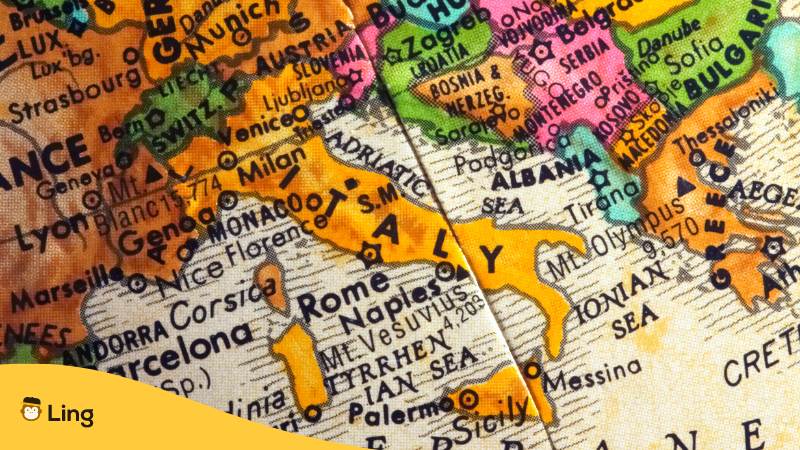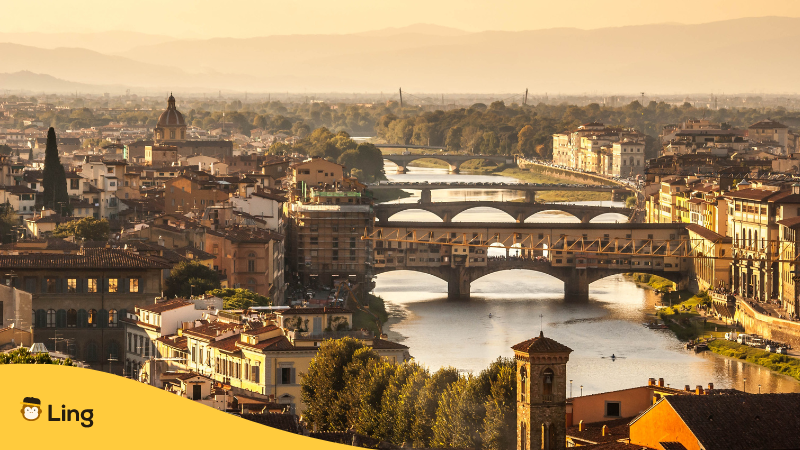Are you curious to find out what the spoken languages in Italy are? Of course, the primary language in Italy is Italian, but the government officially recognizes 12 other languages. But this is not all because Italians might speak different dialects depending on their region.
Although the local languages spoken in Italy are not recognized as official, Italians still speak them. Therefore, each dialect could appear like a separate language to a foreigner, but it is only a local variation of Italian.
Here is a clear picture of the languages of Italy.
What Are The Official Spoken Languages In Italy?
In Italy, 12 officially recognized languages are spoken in addition to Italian. They are the so-called linguistic minorities, a precious cultural heritage, rich in differences, and witness to the multicultural tradition of the Italian country and history.
The linguistic minorities of Italy can schematically fall into three groups, attributable to the linguistic concept of alloglossies, i.e., varieties more clearly differentiated from the most widely used language.
This includes:
- Languages from another country that have settled in Italy for centuries
- Languages that in some way represent an appendage of foreign territory in Italy
- Some linguistic varieties that are historically spoken on Italian territory (but evolved according to their own rules to be profoundly different)
The first group includes, for example, Albanian, which arrived in Italy in the 1400s and is still spoken in various regions such as Basilicata, Calabria, and Sicily. But also Greek, spoken in some areas of Puglia.
These twelve linguistic groups have been identified and recognized by law, which provides for the protection of minority languages. Those are:
- Albanian
- Catalan
- Germanic
- Greek
- Slovenian
- Croatian
- French
- Franco-Provençal
- Friulian
- Ladin,
- Occitan
- Sardinian
Sardinian and Friulian are the first and second linguistic minorities in Italy, by the number of people who speak them.
Where Are Linguistic Minorities Spoken In Italy?

UNESCO identifies as many as 31 in Italy between different types of Italian dialects and foreign languages.
The linguistic minorities bear witness to Italian history, the life of border communities, and people who have crossed and stopped in the country.
Traditionally, minority language-speaking populations are found in the border regions, where they share the culture and languages of neighboring peoples (such as the Aosta Valley, German-speaking, Ladin, and Slovenian).
In specific regions, such as Sardinia and Friuli Venezia Giulia, where some unique geographical and historical conditions, such as the isolation of islands or the settlement of populations of Germanic lineage, have contributed to the development of sister languages to Italian but are profoundly different.
However, foreign languages, such as the Albanian dialect arbëreshë, Greek, Provençal franc, Catalan, Croatian, or Occitan, can also be spread throughout the national territory. In this case, the variegated distribution depends on voluntary and forced migrations.
Albanian
More in detail, Albanian and its dialects are spoken in a few dozen municipalities scattered in Sicily, Calabria, Basilicata, Puglia, Campania, Molise, and Abruzzo.
Greek
The Greek linguistic minorities are instead concentrated in Puglia, Salento, and Calabria, in the area of the Aspromonte massif.
Croatian
Molise is home to some Croatian linguistic minorities.
Catalan
In Sardinia, in addition to the Sardinian language, a Catalan dialect is also spoken in Alghero, a legacy of the Aragonese occupation of 1354.
German and Franco-Provençal
In Valle d’Aosta French, Franco-Provençal and also German are spoken. While in Trentino Alto Adige, both the Ladin language and German are spoken, which is also found in Veneto, in the area of Verona and Vicenza.
Franco-Provençal is still widely spoken in the Aosta Valley and north-western Piedmont. Furthermore, in the Aosta Valley, the French language is official, and many people use it as an alternative to Italian.
Occitan
In Piedmont, however, Occitan is widespread; a language is also spoken in France, Spain, Monaco, and in the municipality of Guardia Piemontese, in Calabria, founded during the Italian unification and populated mainly by soldiers and officials coming from Piedmont.
Slovenian
Finally, in Friuli Venezia Giulia, in addition to the Friulian language, Slovenian is also spoken, of which there are five dialects and German.
The Italian Language Origins

The history of Italian started in the 1300s when it was only one of the many dialects spoken in central Italy. To be exact, it was the language spoken in Florence, an important economic and financial center at the time.
Over time, Florentine established itself as the language of culture in a very large area, and today it is the official language of the Italian Republic.
In Tuscany, dialects are spoken which are very close to standard Italian but differ from a phonetic point of view. Many consonants have an aspirated pronunciation, giving rise to a very characteristic sound known as the “Tuscan gorgia.”
The fascinating thing is that the gorge is not the same for everyone, but it changes from city to city!
The Regional Languages Of Italy
Italy is divided into 20 different regions, and each might have dialects or a regional language.
Here is an overview of what you can expect in those Italian regions:
- Spoken in central-western Piedmont, it is the language with which the current Italian state was built: the great players of the Risorgimento, such as Cavour and Vittorio Emanuele II, spoke mainly Piedmontese. Due to its location, Piedmontese is also the language of Italy that has been most affected by French influence.
- In Liguria, close to the sea, Ligurian is spoken, also called Genoese, because of the vital role that Genoa (and the respective dialect) has played for centuries in the area.
- Lombardy, the pulsating center of the Italian economy, is in northern Italy, and its language is Lombard.
- In Veneto, eastern Trentino, and some areas of Friuli Venezia Giulia, the Venetian language is spoken, also known as Venetian. This language was critical, especially during the Middle Ages and the Modern Age, so much so that some Venetian words have become international.
- Let’s now move on to Friuli, a region with a characteristic language: Friulian.
- The Emilian dialect is typical of the territories between the Po Valley and the Apennines, made famous worldwide by the films of Don Camillo and Peppone. On the other hand, Romagna is a specific language of the Adriatic coast, of the provinces of Rimini and Cesena, the Republic of San Marino, and the northern Marches.
- Moving to Southern Italy, we find the Neapolitan language, Abruzzo’s dialect. It includes the Calabria region and central and northern Puglia, Molise, Campania, and Basilicata. The dialects of this area are very similar, so much so that they can be considered a single language. Of these variants, the one spoken in Naples is undoubtedly the best known.
- Finally, we find the Sicilian language at the southern end of Italy.
- In Sardinia, at the extreme limits of the Italian geographical area, the Sardinian language developed an autochthonous idiom with unique characteristics in the entire panorama of European languages. In Sardinia, however, not only Sardinian is spoken, but linguistic varieties close to Corsican.
Would you like to know more about Italian or other languages?
Learn Italian With Ling App

There is a lot more to know about Italian and its dialects. However, you can start learning this language effectively using the Ling app.
With this app, you can quickly learn Italian and add separate languages to your learning program. You can choose between 60 options. Ling app comes with a lot of learning features that will turn you from a complete beginner to a fluent speaker in a short period. It comes with detailed grammar lessons, a chatbot to practice Italian with, audio recordings by native speakers, and a lot of games for fun!
Do you want to learn more words in Italian? Check out Happy Birthday In Italian, Italian Greetings, and Best Ways To Say Thank You.
What are you waiting for? Download it from App Store and Play Store for free!



































































